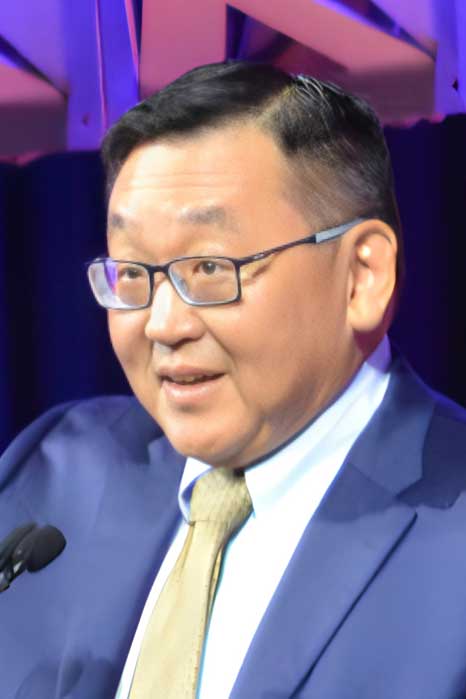The past year has yielded substantive breakthroughs in rheumatology. Two experts in the field highlighted some of the most significant recent findings in basic and clinical investigation and the clinical practice of rheumatology during Sunday’s Year in Review.
The session is available on demand for registered ACR Convergence 2023 participants through Oct. 31, 2024, on the meeting website.

Philip Seo, MD, MHS, Associate Professor of Medicine at Johns Hopkins University, presented this year’s clinical science update. He noted the rising prevalence of rheumatic diseases like osteoarthritis (OA). A study he cited showed that in 2020, 595 million people had OA, a 132% increase since 1990.
“If you look just at the prevalence of knee OA, that’s expected to increase by another 75% by 2050,” Dr. Seo explained.
While discussing newer, emerging diseases, he shared a paper that highlighted deficiencies of the dedicator of cytokinesis 11 gene (DOCK11) gene.
The DOCK11 gene is responsible for cytoskeleton (actin) regulation, which is relevant to rheumatology because the cytoskeleton is intrinsic to the function of immune cells. Therefore, a defect in this pathway could cause patients to experience significant immune issues. The study identified four patients with DOCK11 deficiencies that manifested similar symptoms across patients, such as anemia, systemic inflammation, and recurrent infections.
“If you had curbsided me about a patient who had this syndrome, my first thought would have been the patient has lupus,” he said. “And the second reason I’m highlighting this is because I think rare diseases are more common than we realize.”
Dr. Seo also discussed advancements related to arthritis. He derided the approach many researchers have traditionally taken with rheumatoid arthritis (RA) trials due to the common practice of comparing novel compounds with promising mechanisms of action to an irrelevant control variable.
“What we really need are clinical trials where all the arms are looking at interventions that we might actually use,” Dr. Seo said.
One study that followed this tenet from Dr. Seo was the randomized, controlled NORD-STAR trial, which included 812 patients with RA who were early-treatment naïve and had moderate to severe disease activity. All patients received methotrexate but were subsequently randomized to certolizumab, abatacept, or triple therapy (tocilizumab).
“What they [NORD-STAR researchers] found was really interesting: They found that triple therapy was the worst option for patients overall and that certolizumab or abatacept were significantly better,” Dr. Seo explained.

Professor of Medicine Tomas Mustelin, MD, PhD, Mannik-Henderson Professor of Medicine and Chief, Division of Rheumatology and Associate Director for the Center for Innate Immunity and Infectious Disease in the Department of Medicine, University of Washington, delivered this year’s basic science update. He noted that many advances in the field over the last several years have been due to advances in DNA-sequencing technology and computational advances in processing and analyzing large data sets. He cited the technological landscape and applications of single-cell multi-omics in a paper published in Nature Reviews Molecular Cell Biology that listed four new technologies invented in 2023, including spatial CITE-seq and spatial ATAC-RNA-seq.
While discussing the new computational capabilities with voluminous data sets, he cited a Plos One paper that deciphered novel and shared gene signatures of RA and systemic lupus erythematosus (SLE) through an integrative analysis of transcriptomic profiles from previously existing data sets. While the study found several shared pathways and altered biological features, Dr. Mustelin’s primary takeaway was how different the two diseases are.
“For basic scientists, this is a little bit more of a shock that in two diseases that we think about as prototypical autoimmune diseases, the gene signatures are only 15% similar,” he said.
Dr. Mustelin also shared how discoveries from non-rheumatic diseases could lead to significant insights and breakthroughs applicable to rheumatic diseases like lupus. He cited several recent papers looking into the role of neoantigens in type 1 diabetes (T1D).
According to Dr. Mustelin, researchers have concluded neoantigens can arise in patients with T1D through two different mechanisms. One is the covalent coupling of insulin with other cellular proteins that, upon proteolysis, give rise to peptides novel to the immune system. The other mechanism is that in stressed beta cells, mRNA splicing is disturbed and results in abnormal mRNA that contains amino acid sequences the immune system hasn’t seen before.
“I looked for papers of that nature in our own diseases, and I did find a few kind of early papers hinting that perhaps this biology operates in lupus as well,” Dr. Mustelin explained.
WATCH ACR CONVERGENCE 2023 SESSIONS ON DEMAND
If you weren’t able to attend a session in person during ACR Convergence 2023, you haven’t missed out. All registered meeting participants receive on-demand access to scientific sessions through October 31, 2024.


